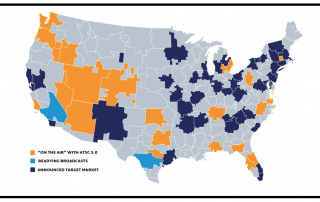CES 2021 for Broadcasters
As CES kicks off, we put together this list of sessions, events and links that broadcasters may find of particular interest when attending the virtual gathering.
A Few Pictures About Next Gen TV Are Worth a Few Thousand Words
The end of 2020 has come and gone. The pandemic slowed down many of our businesses and our strategic plans were revised multiple times over the course of the year. For Next Generation TV, though, in spite of all the challenges, significant progress was made in launching stations across the country in 2020. Below we’ve [...]
Broadcast Technology Predictions: Excitement and Expectations for 2021
After the challenges of 2020, we're finding excitement as we turn toward the beginning of a new year that offers the chance to look back but, more importantly, look forward to new opportunities. We wanted to know what technologists in our industry are excited about and expect (or hope) to see in 2021. So we [...]
Broadcast TV (the Platform) and “A Christmas Carol”
Consultant Shelly Palmer’s recent piece, "TV: The Platform vs. The Artform," is a cautionary tale. Making the case that the TV "platform," meaning traditional broadcast television stations and networks (along with cable networks), "has damaged its consumer experience beyond repair," he comes to the following exasperated conclusion: "TV is dead to me. It’s not only [...]
The NextGen TV Surge
During this pandemic we don’t typically like to hear of a surge. But as it relates to NextGen TV the surge is a good thing. It means new and improved broadcast television offerings in more and more markets, and we are definitely in the midst of a surge. Seventeen stations have launched this year with three new [...]
Smart Speaker or Voice Platforms? Words Matter
Words matter (in more ways than one) when talking about or talking to smart speakers. Simply calling these devices that sit on our desks and counters a “speaker” evokes the idea of a one-way engagement where music, news and information is simply delivered via audio – or audio and video on those devices that also [...]







